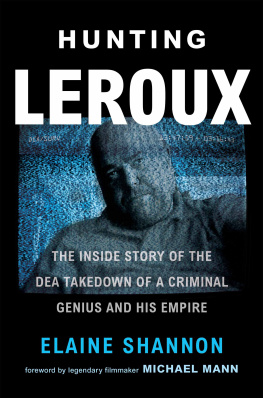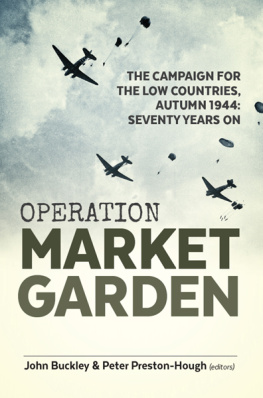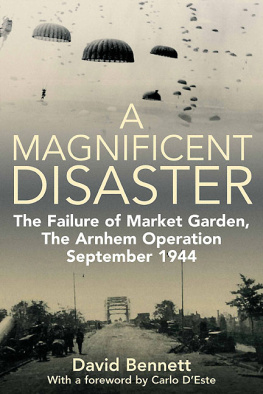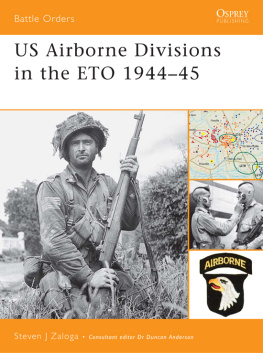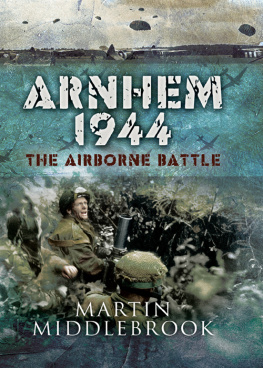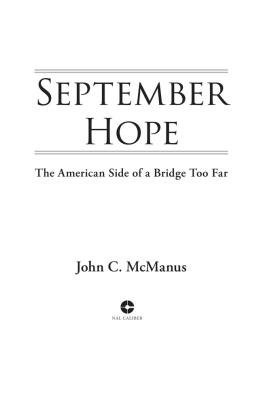CROSSING THE RHINE
CROSSING THE RHINE
BREAKING INTO NAZI GERMANY 1944 AND 1945 THE GREATEST AIRBORNE BATTLES IN HISTORY
LLOYD CLARK

Copyright 2008 Lloyd Clark
All rights reserved. No part of this book may be reproduced in any form or by any electronic or mechanical means, or the facilitation thereof, including information storage and retrieval systems, without permission in writing from the publisher, except by a reviewer, who may quote brief passages in a review. Any members of educational institutions wishing to photocopy part or all of the work for classroom use, or publishers who would like to obtain permission to include the work in an anthology, should send their inquiries to Grove/Atlantic, Inc., 841 Broadway, New York, NY 10003.
First published in 2008
by HEADLINE REVIEW
FIRST AMERICAN EDITION
eBook ISBN-13: 978-1-5558-4815-6
Atlantic Monthly Press
an imprint of Grove/Atlantic, Inc.
841 Broadway
New York, NY 10003
Distributed by Publishers Group West
www.groveatlantic.com
Contents
1 The Strategy of Exploitation
The Allies: 25 August17 September 1944
2 Withdrawal
The Germans: 25 August17 September 1944
3 Chasing the Dream
Airborne Warfare and its Soldiers: The Birth of Parachuting to Summer 1944
4 Stitching Things Together
Planning: 1017 September 1944
5 Jumping the Rhine (I)
Operation Market Garden: 1718 September 1944
6 Perimeters
Operation Market Garden: 1921 September 1944
7 Touching the Rhine
Operation Market Garden: 2126 September 1944
8 Riposte
The Ardennes and Advance to the Rhine: October 1944March 1945
9 The Deluge
Planning and Launching Plunder Varsity: 1024 March 1945
10 Jumping the Rhine (II)
Operation Varsity: 2428 March 1945
For the girls: Catriona, Charlotte, Pauline, Caroline, Betty,
Lorna, Dariel, Isobel, Sophie, Alicia and Ciara. Formidable.
Acknowledgements
I count myself extremely fortunate to have a job that I enjoy so much and which frequently brings me into contact with so many extraordinary and generous people. This book could not have been written without their assistance, and I am delighted to acknowledge them here. A list of those veterans whom I interviewed, corresponded with, and who provided me with their diaries and papers, can be found in the bibliography, but I should particularly like to thank the late Geoffrey Powell, the late Len Wright and Major-General Anthony Deane-Drummond, a remarkable man from a remarkable family who continues to be an inspiration to all who are privileged to meet him. I feel immensely honoured to have spent so much time in the company of old soldiers, and remain humbled in their presence.
I should also like to express my gratitude to the hardworking staff of the following archives, libraries, museums and other institutions who have gone out of their way to make my job as easy and as enjoyable as possible: the National Archives, Kew, London; the Imperial War Museum, London; the Liddell Hart Centre for Military Archives, Kings College London; the Airborne Forces Museum, Aldershot; the Museum of Army Flying, Middle Wallop; the Royal Historical Society, University College London; the Institute of Historical Research, University of London; the University of London Library; the London Library; Dr John S. Duvall at the Airborne and Special Operations Museum Foundation, Fayetteville, North Carolina; Dr Adrian Groeneweg and the staff of the Airborne Museum Hartenstein, Oosterbeek, Holland; the National Archives, Maryland; the Donovan Research Library, US Army Infantry School, Fort Benning, Georgia, and Das Bundesarchiv, Freiburg and Koblenz. I am also grateful to Mr Derrick Randall for permission to quote from his Experiences of a Medical Officer at Arnhem from the BBC WWII Peoples War Archive. Whilst I have endeavoured to trace the copyright-holders of other material that I have quoted in this book, I have either failed to track them down or found that my letters have not been answered. I would, however, be pleased to rectify any omissions if copyright-holders should wish to contact me.
My particular thanks, as always, go to Andrew Orgill and his patient, jolly and highly professional team at the Central Library, Royal Military Academy Sandhurst: John Pearce, Gareth Bellis, Ken Franklin, Stuart Robinson and Mel Bird. Sandhurst is an excellent, vibrant and stimulating place to work, and without the support of this august institution I would not be able to write. Sean McKnight, Yoland Richardson, Dr Duncan Anderson and my colleagues in the Department of War Studies have all played their part in making this book possible. My military colleagues are also deserving of my appreciation, with a special mention due to Majors Laurence Bedford and Sid Keyte, with whom I have worked closely over the last year, much of it abroad. Their sense of humour, focus and companionship have been much appreciated. Laurence, I forgive you for getting me lost so often and for making me go out for runs along beaches in blizzards. I also owe my officer cadets considerable thanks for their thirst for knowledge, intelligent questions, encouragement and sense of fun: they make my job worthwhile and have my admiration. I am also indebted to Debbie Fields, Leo Berger and Michael Roberts, who assisted me with research and the translation of important texts; Charlie Viney, my ever supportive agent; and my patient and kind publishers, Martin Fletcher and Lorraine Jerram at Headline, and Jofie Ferrari-Adler and Morgan Entrekin at Grove Atlantic. Thanks also to Margaret Wallis for her copyedit and Alan Collinson at Geo-Innovations for the maps.
Finally, my deepest gratitude goes to my longsuffering family. I have now written several books and each one has impacted on them more than I would like and they deserve. My wife Catriona and children Freddie, Charlotte and Henry have tolerated my long absences abroad, my preoccupation with the book and all that goes with being a busy writer and academic, with great fortitude and understanding. Thank you.
Lloyd Clark
Wigginton Bottom and Camberley, April 2008
Maps
Introduction
There are thousands of eyes keeping watch on the Rhine; thousands of German eyes It has the feel of the last barrier, and I know that when the Allied armies cross this brown river, it will be the end of Nazi Germany.
(War Correspondent R.W. Thompson, 24 November 1944)
The River Rhine has been at the centre of the lives of those living within its reach ever since man could harness its potential, but over the centuries it attained a significance and influence that affected the entire Continent. From its source in the Swiss Alps to its emptying into the North Sea, the Rhine not only carved its way through 820 miles of Europes heartland, but also deep into its peoples psyche. As an important boundary, trade route and symbol of strength, it quickly became the subject of passionate political disagreement and military violence. Indeed, its blood-soaked shoreline has moved one commentator to write: In every century great armies have fought for possession of its banks, its bridges, its crossings, its cities, in a way that no other river has ever been fought for. Its long and troubled history helped to define the river, and although todays travellers cruising along its calm waters may delight in the aesthetic charm of the castles and ruins on its banks, they are the physical evidence of the Rhines turbulent past. These fortifications enhanced the rivers natural defences, encompassed notable breadth, depth and current, and allowed few successful aggressive crossings from the West. Consequently the Rhine developed a reputation as not only a great physical barrier but also a psychological one. It was a situation that Julius Caesar recognized when his troops breached the river in 56 BC. He later wrote that his offensive motivations were in part to give the Germans reasons of their own for anxiety when they realized that an army of the Roman people could and would cross the Rhine.
Next page



